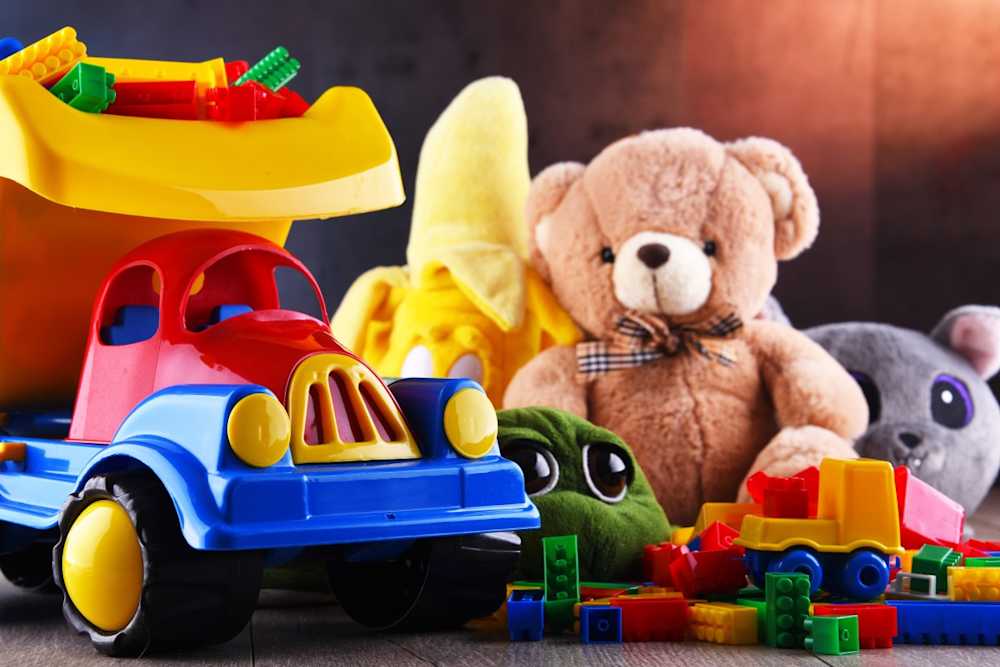All toys sold in Europe must comply with the Toy Safety Directive 2009/48/EC, which aims to ensure that toys do not endanger children's health or safety when they are used as intended or in a foreseeable way, considering how children behave. The requirements outlined in the directive include, among others, physical and mechanical durability, minimized flammability, and safety of chemical components.
Requirements for physical and mechanical properties
According to Part I of Annex II of the Toy Safety Directive, toys must have the mechanical strength and stability to withstand the stresses of play without breaking or distorting in a way that could cause physical injury. To ensure this, the following requirements must be met:
Toys must not have sharp edges, protrusions, or moveable parts that could hurt a child.
Toys, their parts, or their retail packaging must not present a risk of strangulation or asphyxiation.
Toys intended for under-three-year-olds must not contain or release small parts that could be swallowed or inhaled.1
Additional rules apply to specific toy categories, such as toys that are attached to food, used in water, make noises, provide mobility, or include projectiles.2
Failing to meet the requirements relating to physical and mechanical properties is a common reason for toys being found non-compliant with the Toy Safety Directive and subsequently being removed from the market. Most often, this is due to a choking hazard, followed by injury, suffocation, and strangulation risks.3
Requirements for toy flammability
The fire safety requirements for toys marketed in the EEA are outlined in Part II of the Toy Safety Directive’s Annex II. To fulfill them, toys must be composed of materials that meet at least one of the following conditions:
They do not burn if directly exposed to a flame, spark, or other potential fire source.
They are not readily flammable, which means that the flame goes out as soon as the cause of the fire disappears.
If they do ignite, they burn slowly.
They are designed to mechanically delay the combustion process.
Additional flammability rules apply to toys and games containing particular chemicals, for example, chemistry experiment, model assembly, and photography sets.4 Flammability risks should also be accounted for when producing toys that children may enter, soft toys, fancy dresses, wigs, and masks.
Chemical safety requirements
Toys must be designed and manufactured in such a way that the chemicals they contain do not pose a risk to human health. Like other consumer products marketed in the EU, they are subject to the REACH and CLP regulations, in addition to which the Toy Safety Directive sets prohibitions and restrictions for a variety of chemicals.5
The directive currently bans 58 allergenic fragrances in most toys in concentrations above 100 mg/kg, and other fragrances listed in Part III of Annex II may only be used subject to labeling requirements. In addition, migration limits apply to 19 elements, including aluminum, boron, cadmium, lead, chromium, and mercury.
Additional requirements apply to toys intended for under-three-year-olds or intended to be placed in the mouth. These must not contain or allow the migration of certain harmful chemicals, such as bisphenol A and the VOCs formaldehyde and phenol, in amounts exceeding the limits listed in Appendix C of the directive. Nitrosamines and nitrosable substances are also prohibited in such toys.
In 2022, non-compliance with chemical safety rules was the largest single reason for toys being recalled or withdrawn from sale in Europe. More specifically, non-compliant toys were often found to violate REACH regulation restrictions on phthalates or release an excessive amount of restricted elements.6
Harmonized standards for toy safety testing
Following harmonized standards during compliance testing is the most straightforward way to ensure that toys are compliant with the Toy Safety Directive, as fulfilling the specifications of the relevant standard results in a “presumption of conformity” with regard to the corresponding parts of the directive.7 The following are examples of harmonized toy safety standards and the properties they cover:
EN 71-1: Mechanical and physical properties
EN 71-2: Flammability
EN 71-9: Organic chemical compounds
EN 71-12: N-nitrosamines and nitrosatable substances
Measurlabs offers toy safety testing by European harmonized standards to help manufacturers and importers verify compliance before affixing the CE marking to toys and marketing them in the EU. Please contact us through the form below to discuss the testing options and to request a quote. One of our experts will get back to you within one business day.
Notes and references:
1 Even if not specifically intended for under 3-year-olds, toys that may interest small children also have to fulfill this requirement. For example, small parts must not detach from soft-filled toys when they are handled by toddlers.
2 See Annex II, Part I of Directive 2009/48/EC for more details.
3 According to Safety Gate: the EU rapid alert system for dangerous non-food products, 195 of the 452 serious risk incidents reported in 2022 in the toy category related to choking, 45 to injuries, 25 to suffocation, and 12 to strangulation. The same product may have been flagged for several risks.
4 Annex II, Part II of Directive 2009/48/EC
5 See Annex II, Part III, Chemical Properties and Appendices A, B, and C of the consolidated version (05/12/2022) of Directive 2009/48/EC for the full list of prohibited and restricted chemicals.
6 200 of the 452 serious risk incidents reported in the Safety Gate system during 2022 related to chemicals. 131 of the non-compliant toys contained excessive phthalate concentrations and 41 exceeded the Toy Safety Directive migration limits for certain elements.
7 Conformity assessment explanation from the EU’s Directorate General for Internal Market, Industry, Entrepreneurship and SMEs. See also the summary of references of harmonized standards for Directive 2009/48/EC.

